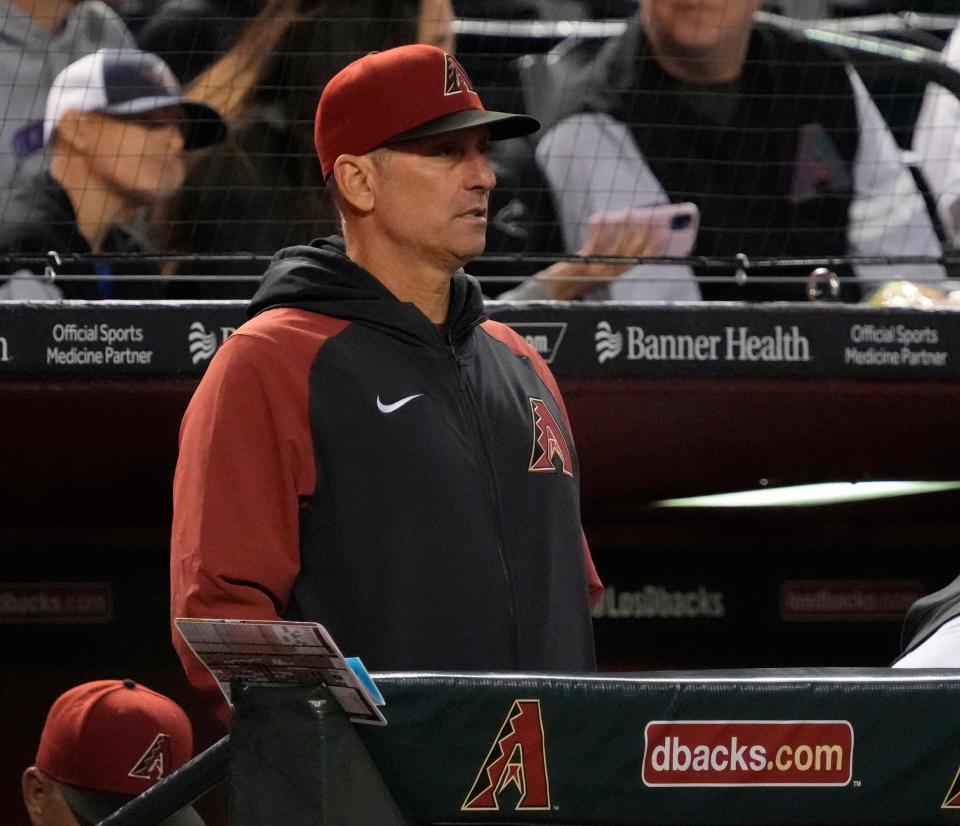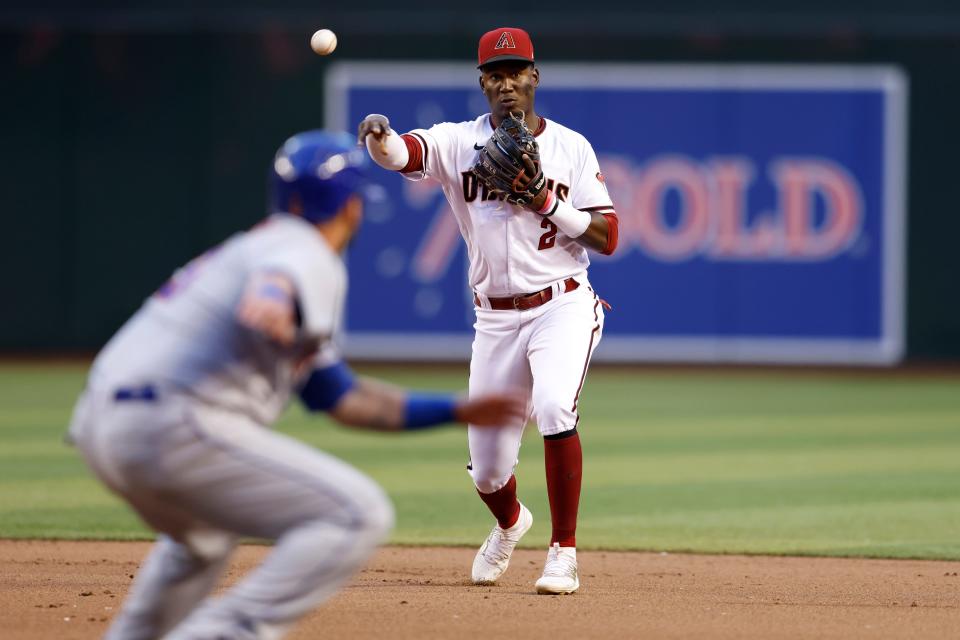For the Diamondbacks, using infielders' movement to identify pitches is a focus

While the attention of thousands inside Chase Field is invariably on the battle between pitcher and batter, Torey Lovullo’s attention sometimes drifts elsewhere. Specifically, he looks towards the movement of opposing middle infielders. It’s not every pitch, Lovullo explains, but maybe once every four or five offerings.
The logic is that the movement of middle infielders can occasionally tip Diamondbacks’ batters off to whether a pitch is going to be a fastball or off-speed. On fastballs, infielders typically position themselves to expect balls up the middle or hit the other way. On off-speed pitches, they expect balls to a batter’s pull side.
The goal for defenses is, of course, to disguise their intentions — to prevent what Lovullo refers to as "stomping," a term he made up for middle infielders tipping pitches. Not every player throughout the league, though, is successful in that ambition.
“There are stompers in this league that we have on our list right now that we know of,” Lovullo said. “So when we go into a game, we'll be like, remember, they've got two stompers out there, pay attention.”
Sitting beside his locker Tuesday afternoon, infielder Geraldo Perdomo mentioned a well-known middle infielder on a National League team as a notable offender. With some infielders, Perdomo added, pre-pitch movement can be a sign of location rather than pitch type. Inside pitches are more likely to be pulled while outside pitches are more likely to be hit the other way.
Perdomo takes location into account on his own positioning — something he said he’s done as long as he can remember.
“I always do the same. It doesn't matter if it's off-speed, I always anticipate where it's gonna be,” Perdomo said, specifically mentioning a play from Monday’s game when he correctly moved to the pull side on an inside pitch to a right-handed batter, putting himself in position to make the play had third baseman Josh Rojas not gotten to the ball first.

Like all middle infielders, though, Perdomo is careful not to position himself in a way that’s obvious to opposing hitters. While Lovullo said that the Diamondbacks try to get signs down early to make it harder for batters to read fielders’ movement, Perdomo prefers to move while a pitch is en route to the batter. That way, he can base his movement off of both pitch type and location.
According to Lovullo, the Diamondbacks are obsessive about preventing their own infielders from tipping pitches — even going so far as to deploy decoy stompers. Lovullo calls it one of his “babies,” along with not allowing delayed steals, which he describes as a symptom of “lazy defense.”
The Diamondbacks work on disguising their positioning “extensively” in spring training, Lovullo added.
On the other side, they try identify opposing teams stomping, although Perdomo acknowledged that it’s “hard to pay attention to that because you’re always focused on the pitcher.”
To identify stomping, a hitter has to know when the catcher is putting down signs and look towards the middle infielders in the split second that they’re tipping pitches. That’s why it’s critical to know which players are notoriously transparent in advance.
Hitters also identify it during games, pointing out suspicious movement to the dugout after their at-bats.
“Our hitters are watching a lot,” Lovullo said. “They’ll share it. I’ll hear hitters say they stayed on that pitch because they saw the second baseman move. Sharing information and then next thing you know we’re on the move.”
Theo Mackie covers Arizona high school sports, the Arizona Diamondbacks and Phoenix Rising FC. He can be reached by email at theo.mackie@gannett.com and on Twitter @theo_mackie.
This article originally appeared on Arizona Republic: Arizona Diamondbacks use infielders' movement to identify pitches

